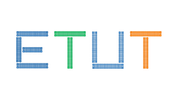Reflections of Hafte Hayelom
In our serie "What does the future bring?" our ESR's are sharing their perspective. This serie is linked to the Horizon Magazine article published on Monday, March 13 2024 which focusses on EU support for Ukrainian researchers including ETUT project regarding "Building bridges between Ukrainian and EU researchers" featuring Regis Nibaruta, Ivan Struzhko, Vladimir Havryliuk, Gert Rietveld and Frank Leferink. The full article can be found https://ec.europa.eu/research-and-innovation/en/horizon-magazine/building-bridges-between-ukrainian-and-eu-researchers By Andrew Dunne.
Via Cordis, the project is described as'the ETUT project will model, design, estimate, quantify and monitor economic measures for a reliable, safe, effective and greener electrical transport system. The training programme will include innovative methods to be applied in electric transport... it may have far reaching consequences and may even see the railway network supporting or replacing local electrical utility networks' Can you explain the problem specifically? In simple terms, what exactly is the electrical engineering challenge in terms of future electric transport systems and what's the link with local electrical utility networks too?
One of the main problems in electrical transport systems is the electromagnetic compatibility (EMC) issue. That is, all electrical, electronics, ICT and telecommunication devices must not disturb to each other and disturbed by each other. However, the development of high switching frequency power electronics devices is creating harmonics and transients which are one of the main sources of electromagnetic interferences. The railway system is usually exposed to magnetic and electric fields from the traction system, nearby power transmission lines and other related sources. These can generate conducted and radiated Electromagnetic Interference (EMI) which can affect the electronic and signalling equipment, and this problem can cause accident, delay, and cancelation of trains.
The electric transport system especially the railway system is directly connected to the electrical utility network. So, any problem from the railway electrification system can affect the other utility network and vice versa.
When we spoke you described these two areas of electrical engineering where the main focus was - electromagnetic compatibility and power electronics. Can you give me examples of the kind of devices that might benefit from improvements to both and can you explain the link with these two areas and future electric transport systems?
Now a days, it’s common to use power electronics devices specially in transportation system and in electrical generation and utility systems due to their flexibility, controllability, and high efficiency and the development of high-power switching devices. Besides to their advantages, they are the sources of harmonics. That means they are creating problems that can affect the electromagnetic compatibility directive. In short, if there is power electronics device in any system, it can generate EMI. So, experts have to work in both areas starting from the design phase to minimize these problems. Let me give you one example, I saw news [1] to generate electricity from Photovoltaic (PV) system and connect directly to a third rail system using DC-DC converter. The main challenges for this project will be: (1). They have to design new or optimized power electronics converter, that is, they need power electronics engineer. (2). The PV system and power converters create EMI problems, so they need EMC engineer. To save money, time and energy the expertise’s have to work together from the design phase.
Are there any examples of really applied research which you are currently conducting which relates to electric transport systems which we can talk about? Can you explain what you are working on - in an applied sense - with whom, and how?
Yes, there are. My project is about EMC of AC and DC traction supply railway systems with automatic devices. So, I am working to identify the sources of EMI from the traction supply which is mainly composed of transformers, power electronics converters, and the main electrical network lines and mitigate these interferences not to affect the automatic devices in the railway system(signalling and telecommunication devices). Currently, I’m working with the state of the art and then I will model it using simulation tools in order to verify it in experiment and field measurements in collaboration with Network Rail railway company in the UK.
What is the long-term hope with this work? From a research point of view, what are YOUR long-term motivations for this all is and what are the impacts he envisages in the future (i.e. who does he see will benefit from this research in the future, and how?).
I am hoping the research work from both areas will help to improve some of the problems/challenges in the future electric transportation sector because we are working with real problems in the railway transportation sector. So, if we successfully finished the project, it will help the future electric transport sector by introducing new/modified technologies to minimize some of the challenges related to EMC and power electronics areas.
Could I get a reflection from you on the importance of developing future electric transport systems in view of climate change and emission reduction targets? Why is this issue you're tackling so important from an environmental perspective?
Now a days, it is common to observe flood, extreme heat, and extreme cold weather due to the climate change. One of the main sources of CO2 emissions is the transportation sector which is around 37% in 2021 and 91% of the transport sector depend on oil products [2]. So, most countries in Europe specially the EU members have a plan to have climate neutral continent by 2050. To achieve this plan, the future transportation sector must be electrified and work effectively and efficiently. So, we are working to contribute some solutions to some of the main challenges in this sector.
References
[1] e. &. h. r. technology, "https://cdn.coverstand.com/66626/765778/," 2022.
[2] Iea, "https://www.iea.org/topics/transport," Iea, 2021.

